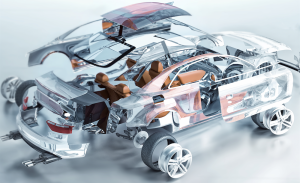What Is the Relevance of Technology?
4 min read
“Innovation over the long haul is unessential”. That is the thing that a client of mine disclosed to me when I made an introduction to him about another item. I had been discussing the item’s highlights and benefits and recorded “cutting edge innovation” or a comment impact, as one of them. That is the point at which he put forth his expression. I understood later that he was right, in any event inside the setting of how I utilized “Innovation” in my introduction. Yet, I started contemplating whether he could be appropriate in different settings also.
What is Technology?
Merriam-Webster characterizes it as:
1a: the commonsense utilization of learning particularly in a specific territory: designing 2 <medical technology>
b: an ability given by the functional utilization of learning <a auto’s fuel-sparing technology>
2: a way of fulfilling an undertaking particularly utilizing specialized procedures, techniques, or learning
3: the specific parts of a specific field of attempt <educational technology>
Wikipedia characterizes it as:
Innovation (from Greek tî???, techne, “workmanship, aptitude, tricky of hand”; and – ???î¯a, – logia[1]) is the making, alteration, utilization, and learning of apparatuses, machines, procedures, specialties, frameworks, and strategies for association, with a specific end goal to take care of an issue, enhance a previous answer for an issue, accomplish an objective, handle a connected info/yield connection or play out a particular capacity. It can likewise allude to the accumulation of such devices, including apparatus, changes, courses of action and techniques. Innovations fundamentally influence human and other creature species’ capacity to control and adjust to their common habitats. The term can either be connected for the most part or to particular territories: illustrations incorporate development innovation, medicinal innovation, and data innovation.
The two definitions rotate around a similar thing – application and utilization.
Innovation is an empowering agent
Many individuals erroneously trust it is innovation which drives advancement. However from the definitions over, that is unmistakably not the situation. It is opportunity which characterizes development and innovation which empowers advancement. Think about the great “Form a superior mousetrap” illustration instructed in many business colleges. You may have the innovation to assemble a superior mousetrap, however in the event that you have no mice or the old mousetrap functions admirably, there is no open door and after that the innovation to manufacture a superior one ends up noticeably unimportant. Then again, on the off chance that you are overwhelm with mice then the open door exists to develop an item utilizing your innovation.
Another illustration, one with which I am personally natural, are buyer gadgets new businesses. I’ve been related with both those that succeeded and those that fizzled. Each had one of a kind driving edge innovations. The distinction was opportunity. Those that fizzled couldn’t discover the chance to build up a significant advancement utilizing their innovation. Actually to survive, these organizations needed to transform frequently into something entirely unexpected and on the off chance that they were fortunate they could exploit subsidiaries of their unique innovation. As a rule, the first innovation ended up in the piece pile. Innovation, in this manner, is an empowering influence whose extreme offer is to make upgrades to our lives. So as to be significant, it should be utilized to make advancements that are driven by circumstance.
Innovation as an upper hand?
Many organizations list an innovation as one of their upper hands. Is this legitimate? At times yes, however In many cases no.
Innovation creates along two ways – a transformative way and a progressive way.
A progressive innovation is one which empowers new enterprises or empowers answers for issues that were beforehand unrealistic. Semiconductor innovation is a decent case. Not exclusively did it bring forth new businesses and items, however it brought forth other progressive innovations – transistor innovation, incorporated circuit innovation, chip innovation. All which give a significant number of the items and administrations we devour today. Yet, is semiconductor innovation an upper hand? Taking a gander at the quantity of semiconductor organizations that exist today (with new ones framing each day), I’d say not. What about chip innovation? Once more, no. Heaps of microchip organizations out there. What about quad center microchip innovation? Not the same number of organizations, but rather you have Intel, AMD, ARM, and a large group of organizations building custom quad center processors (Apple, Samsung, Qualcomm, and so forth). So once more, a sorry upper hand. Rivalry from contending advancements and simple access to IP mitigates the apparent upper hand of a specific innovation. Android versus iOS is a decent case of how this functions. Both working frameworks are subordinates of UNIX. Apple utilized their innovation to present iOS and picked up an early market advantage. Notwithstanding, Google, using their variation of Unix (a contending innovation), made up for lost time generally rapidly. The explanations behind this lie not in the basic innovation, but rather in how the items made conceivable by those advancements were conveyed to showcase (free versus walled plant, and so on.) and the distinctions in the vital dreams of each organization.
Developmental innovation is one which incrementally expands upon the base progressive innovation. In any case, by it’s extremely nature, the incremental change is less demanding for a contender to match or jump. Take for instance remote cellphone innovation. Organization V acquainted 4G items earlier with Company An and keeping in mind that it might have had a fleeting preferred standpoint, when Company A presented their 4G items, the favorable position because of innovation vanished. The customer backpedaled to picking Company An or Company V in light of value, benefit, scope, whatever, yet not founded on innovation. In this way innovation may have been applicable for the time being, however in the long haul, ended up noticeably superfluous.





